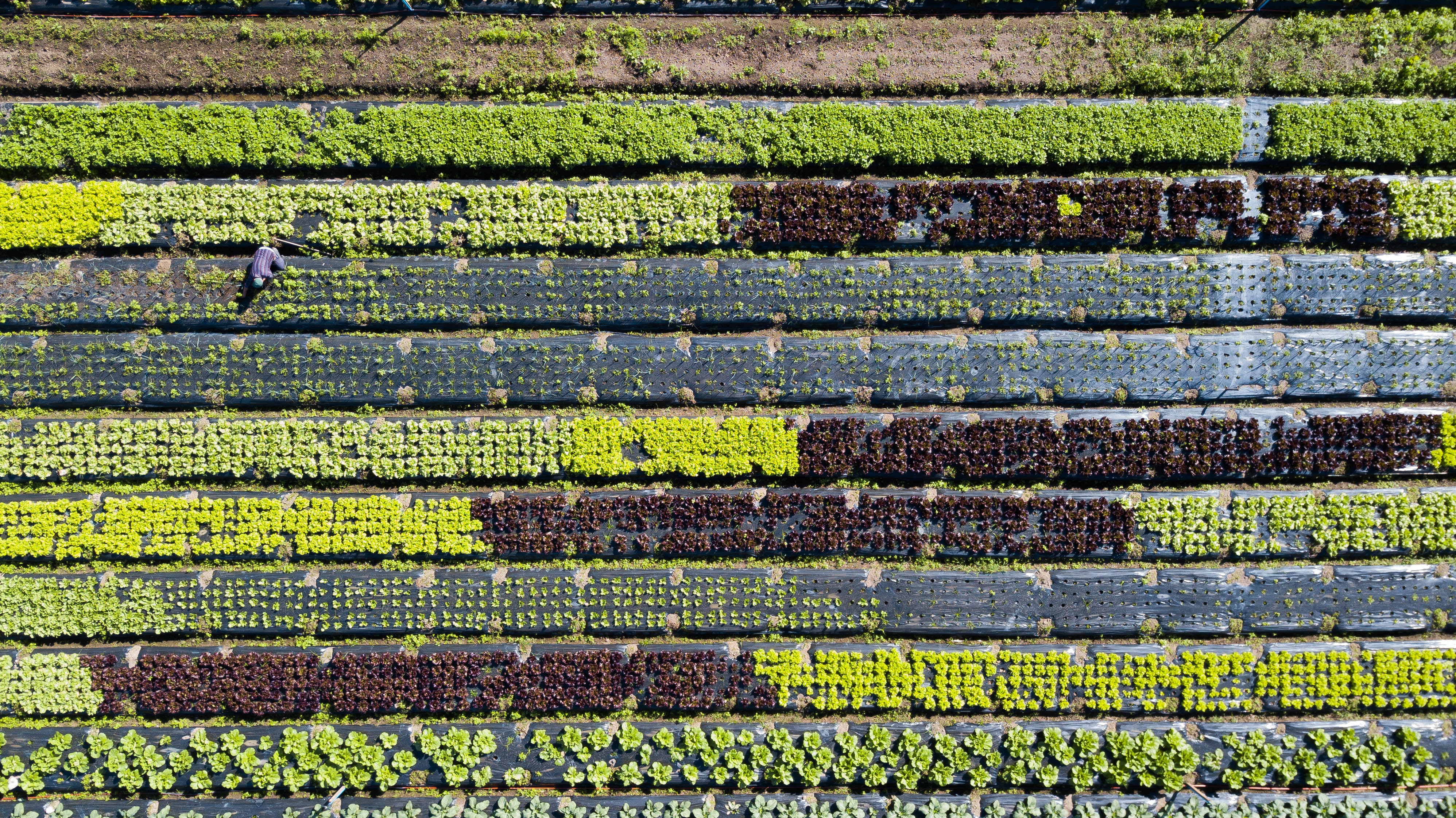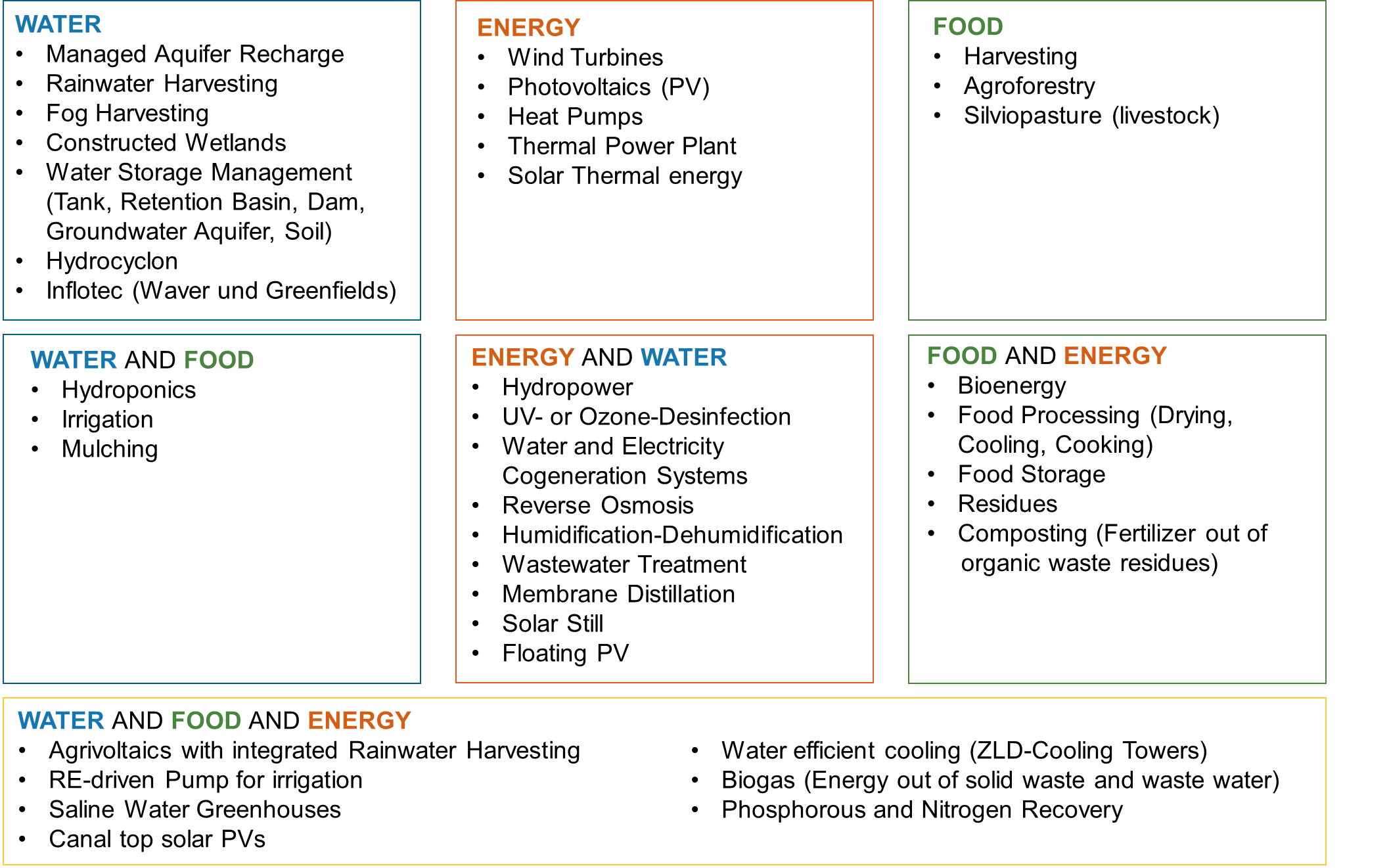7.2 Nexus sound solutions - Overview
The smart combination of single-sector technologies allows to tap the synergies within the water, energy, and food nexus.

Photo by Joao Vitor Marcilio on Unsplash
Nexus smart solutions include agrivoltaics, water and electricity cogeneration systems, solar-powered irrigation systems (see examples), saline water greenhouses (Al-Ismaili and Jayasuriya, 2016), water efficient cooling towers (Pan et al. 2018), recycling of solid waste and wastewater for energy supply (Wang et al., 2017) and fertilization (González-Sierra et al., 2019), and phosphorous and nitrogen recovery (Chrispim et al. 2019, Robles et al. 2020).
7.2.1 Water-Energy-Food Nexus Sound Solutions (WEF-NSS)
All kind of solutions which address WEF nexus challenge and increase resource use efficiency across sectors by tapping synergies and/or minimizing trade-offs. WEF NSS include technology-based systems, nature-based systems, hybrid systems. The systems can encompass multiple sectors or act only in a single sector while indirectly affecting other sectors (e.g., smart irrigation system).
Further, WEF NSS comprise policies, cross-sector coordination instruments, and integrated resource management strategies. The cross-sector efficiency gains can occur at all points of the system processes (source, transformation/conversion, storage, end-use) or can also be induced through the solution (policy, the establishment of cross-sector coordination, integrated resource management).
7.2.2 WEF Polyservice Systems
WEF polyservice system refers to cross-sector technology-, nature-based, and hybrid systems addressing WEF nexus challenges. They interlink at least two sectors and tap direct and indirect synergistic effects across sectors.
7.2.3 WEF Polygeneration/Polyproduction Systems
The term is inspired by the energy sector (e.g., heat and power cogeneration) and expresses the system’s variety of provided end-uses. The term “polygeneration” indicates that the system produces at least two commodities for end-use in different sectors (e.g., Agrophotovoltaics: Electricity and Crops).
7.2.4 Examples and categories of nexus integrated solutions

References
Al-Ismaili, A. M., & Jayasuriya, H. (2016). Seawater greenhouse in Oman: A sustainable technique for freshwater conservation and production. Renewable and Sustainable Energy Reviews, 54, 653–664, https://doi.org/10.1016/j.rser.2015.10.016
Chrispim, M. C., Scholz, M., & Nolasco, M. A. (2019). Phosphorus recovery from municipal wastewater treatment: Critical review of challenges and opportunities for developing countries. Journal of Environmental Management, 248, 109268, https://doi.org/10.1016/j.jenvman.2019.109268)
González-Sierra, R. P., Arrizmediarrieta, J. S., Sánchez, B. P., Iriate, I. I., & Duarte, G. N. (2019). Community Composting: A Practical Guide for Local Management of BIowaste.
Pan, S.‑Y., Snyder, S. W., Packman, A. I., Lin, Y. J., & Chiang, P.‑C. (2018). Cooling water use in thermoelectric power generation and its associated challenges for addressing water-energy nexus. Water-Energy Nexus, 1(1), 26–41, https://doi.org/10.1016/j.wen.2018.04.002
Robles, Á., Aguado, D., Barat, R., Borrás, L., Bouzas, A., Giménez, J. B., . . . Seco, A. (2020). New frontiers from removal to recycling of nitrogen and phosphorus from wastewater in the Circular Economy. Bioresource Technology, 300, 122673, https://doi.org/10.1016/j.biortech.2019.122673
Wang, X., Guo, M., van Dam, K. H., Koppelaar, R. H.E.M., Triantafyllidis, C., & Shah, N. (2017). Waste-Energy-Water systems in sustainable city development using the [resilience.io], Paltform. In Computer Aided Chemical Engineering. 27th European Symposium on Computer Aided Process Engineering (Vol. 40, pp. 2377–2382). Elsevier. https://doi.org/10.1016/B978-0-444-63965-3.50398-6